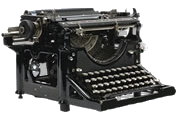Printed five years apart were these two articles that we’ve attached herein collectively recalling three different events by three different services within the American military, each claiming to have fired the opening salvo that served notice to Kaiser Bill and the boys that the U.S. of A. was open for business:
•The first article recalls the U.S. Merchant Marine freighter MONGOLIA that sank a German U-Boat on April 19, 1917 while cruising off the coast of England.
•The second article chuckles at the Army for insisting that the First Division fired the premiere shot on October 23, 1917 in the Luneville sector of the French front;
•following up with the absolute earliest date of American aggression being April 6, 1917 – the same day that Congress declared war – when Marine Corporal Michael Chockie fired his 1903 Springfield across the bow of the German merchant raider S.M.S COMORAN on the island of Guam.
